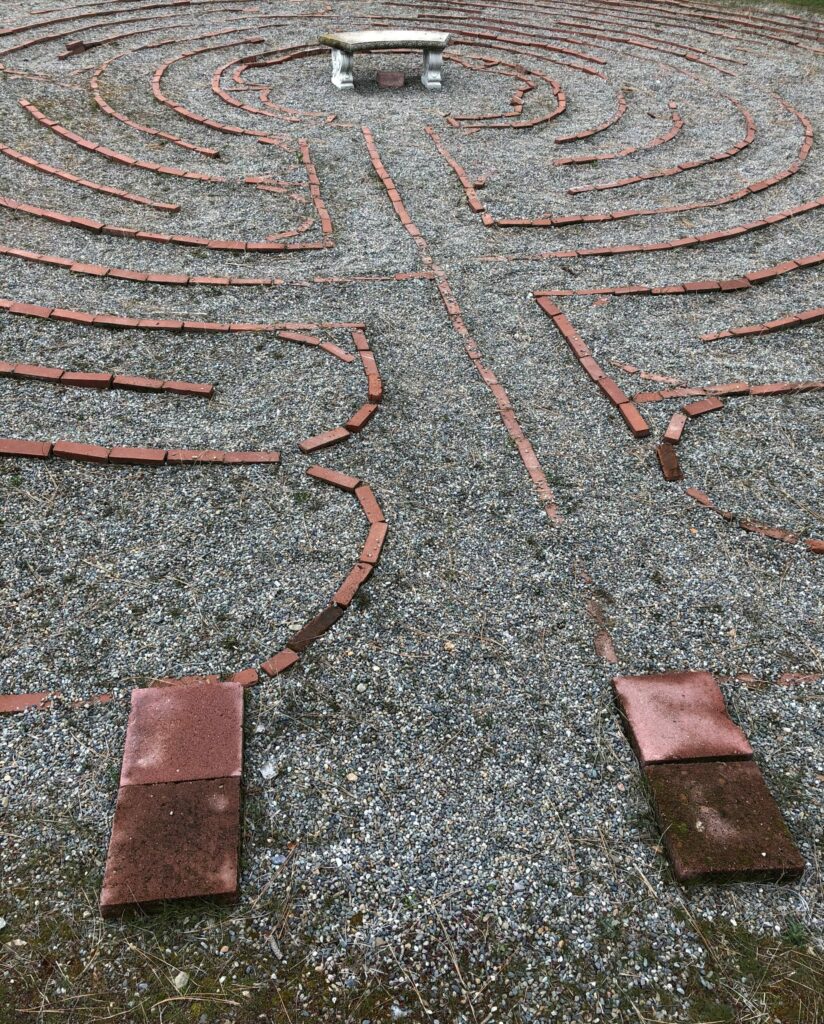
Why Bother Taking a Meditative Walk?
Recently, I’ve had the opportunity to take a few meditative walks inside the confines of different labyrinths. A friend once introduced me to these single and circular pathways and ever since then, I find peace with myself every time I walk inside the designated pathway of a labyrinth.
Contemplative Tool
I like to think of labyrinths as having purpose and structure, similar to the anatomy of our inner ear. If we look at a picture of how our inner ear is designed, we get the idea of a labyrinth. There is a definite pattern, with a beginning, a circular pathway that leads to the center and a purpose; to hear.
A labyrinth is not a maze. It is not complicated and you cannot get lost in it. Instead, it is a single path, from entrance to center and back again. There are any number of labyrinth patterns having from 3, 11, to fifteen circuits. The pathway can be made of grass, gravel, dirt, stone or even canvas. They can be inside a church, or outside in a public space.
Labyrinths are not something that are necessarily advertised nor are they commercialized. You will not find a neon light publicizing its location. They are not popular spots like a restaurant or bar where crowds gather to socialize. Instead, they are off the beaten path, a little secluded, set apart from all else.
Though I know some people have stumbled upon them, I’ve actually searched for them on the world wide labyrinth finder. Yes, there is such a thing.
For me, when I step inside the marked path of a labyrinth, it reminds me of stepping into a cathedral. It is a sacred space, one that is quiet and beautiful. I am not on a mission and I have nothing to accomplish. I am simply there to listen and walk step by quiet step.
I liken a labyrinth pathway to life’s pathway. There are times when we have to stay focused and disciplined and other times when we do not. With my eyes fixed on the path, I simply feel both on my insides and my outsides, how sometimes the labyrinth pathway is short and constricted and then other times when it opens up to longer and more open space.
Reaching the center of the labyrinth I pause, look up and out and then resume my walk, this time returning to whatever I stepped away from.
I use this short span of time inside the labyrinth as a contemplative tool. Sometimes a word or phrase might pop into my head—purpose, commitment, trust and most recently, the statement, fear is a liar.
My purpose for this slow walk is not to solve a dilemma, or to discover a profound insight. My purpose is to simply slow everything down—my breath, my thoughts and my movement. Walking a labyrinth is another means for me to practice staying in the present moment.
Why bother taking a meditative walk? Even if you have to travel to find a labyrinth, taking a slow walk around a labyrinth just might open up or reinforce the practice of being with yourself in the moment.
New Release
